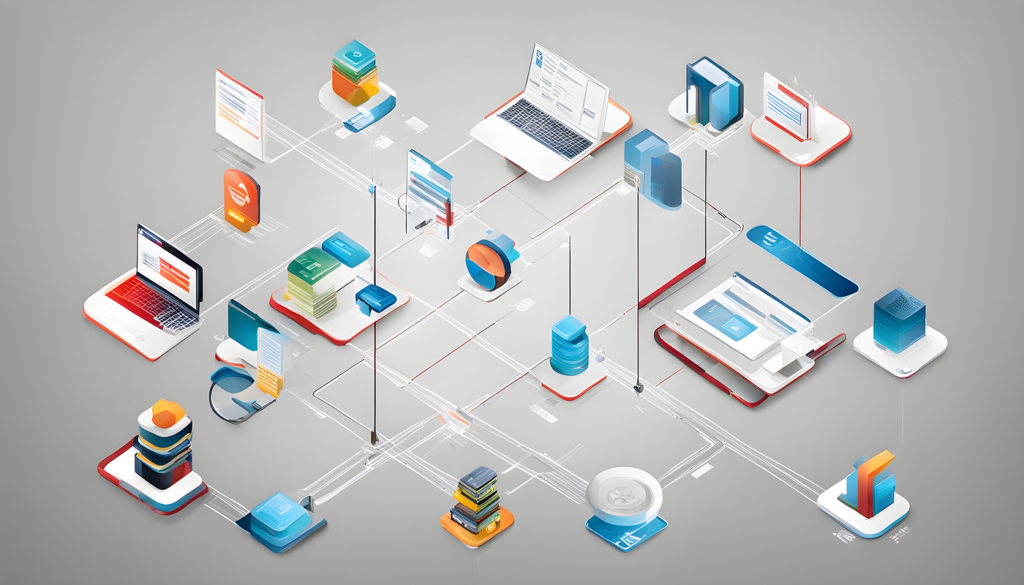In the landscape of modern web development, RoR Development (Ruby on Rails) stands out as a robust, efficient, and highly productive framework. As a senior programmer with extensive experience in web development, I have witnessed firsthand the transformative impact of RoR Development.
This article aims to delve into the intricacies and strengths of Ruby on Rails, offering a detailed perspective on why it remains a top choice for developers and businesses alike.
Ruby on Rails, commonly referred to as Rails or RoR, is a powerful and popular open-source web application framework. It is written in the Ruby programming language and has become a significant player in the world of modern web development. As a senior programmer with years of experience in diverse web technologies, I find that the introduction to Ruby on Rails is vital for understanding its impact and capabilities in creating efficient and dynamic web applications.
Core Philosophy

Ruby on Rails is built on two fundamental principles: Convention over Configuration (CoC) and Don’t Repeat Yourself (DRY).
- Convention over configuration ─ This principle means that Rails makes assumptions about what a developer needs to get started with an application. It comes with a set of conventions that, when followed, reduce the need for verbose configuration files. This approach speeds up development, as it minimizes the amount of tedious and repetitive configuration code that developers need to write.
- Don’t repeat yourself ─ The DRY principle is all about reducing repetition within code. Rails encourages writing clean and maintainable code by ensuring that each piece of knowledge or logic is represented in a single place. This principle not only improves code quality but also makes the codebase easier to maintain and modify.
MVC Architecture
Rails is based on the Model-View-Controller (MVC) architecture, a standard design pattern in web application development. This architecture separates an application into three interconnected components, each responsible for a specific aspect of the application:
- Model ─ The Model represents the data and the business logic of the application. It defines the structure of the database and handles interactions with it.
- View ─ The View is responsible for the user interface. It displays data to the user and renders the user interface components.
- Controller ─ The Controller acts as an intermediary between Models and Views. It processes incoming requests, manipulates data using Models, and renders the appropriate View.
Rapid Development and Productivity

Rails is renowned for its ability to facilitate rapid development. This is largely due to its rich set of generators and scaffolding tools which automate many aspects of application development. Developers can quickly create the necessary components of an application (such as database tables, models, views, and controllers) with minimal commands.
Rich Ecosystem
Ruby on Rails benefits from a vibrant and extensive ecosystem. The Rails community contributes a wide range of “gems” — libraries or plugins that extend the functionality of Rails applications. These gems cover almost every aspect of web application development, making it possible to add complex features with minimal coding.
Strong Community and Documentation
Rails is supported by a robust and active community. This community not only contributes to the framework’s development but also provides extensive documentation, tutorials, and resources. This makes learning and mastering Rails accessible to new developers and helps experienced developers stay updated with best practices and new features.
The Evolution of RoR
Since its release in 2004, RoR Development has significantly evolved, continually adapting to the changing needs of the web development world. Each iteration has brought enhancements, more features, and an even more streamlined approach to web development, cementing its place in the world of modern web frameworks.
Key Features and Strengths of RoR

- MVC architecture ─ RoR is based on the Model-View-Controller (MVC) architecture, which separates the application into three interconnected layers, improving organization and reusability of code.
- Convention over configuration ─ RoR emphasizes using conventional naming and structures over extensive configuration files, leading to less code and increased productivity.
- DRY principle ─ The DRY (Don’t Repeat Yourself) principle is a core tenet of RoR Development, encouraging the reusability of code to reduce redundancy and mistakes.
- Built-in testing tools ─ RoR comes with a comprehensive suite of testing tools, promoting test-driven development (TDD) and behavior-driven development (BDD) methodologies.
Setting Up the RoR Environment
Setting up the RoR Development environment involves installing Ruby, the Rails framework, and a database system like PostgreSQL or MySQL. The process is straightforward, with Rails simplifying much of the configuration and setup, allowing developers to dive straight into coding.
Building a Basic RoR Application
Creating a basic application in Rails involves several components working together. RoR Development makes it easy to handle routing, controllers, views, and models. Rails also provide powerful migration features for handling database schema changes elegantly.
RoR and Database Management
ActiveRecord, RoR’s ORM (Object-Relational Mapping) system, abstracts database interactions, allowing developers to write database queries in Ruby instead of SQL. This abstraction simplifies data handling and reduces the likelihood of SQL injection attacks.
The Asset Pipeline in RoR
The asset pipeline in Rails manages assets like stylesheets, JavaScript files, and images. It concatenates and minifies these assets, reducing the number of HTTP requests and improving the performance of RoR applications.
RESTful Design in RoR

RoR Development encourages RESTful design in web applications, making it straightforward to create applications that follow REST principles. This design pattern improves scalability and maintainability of applications, aligning with modern web standards.
Testing in RoR
Testing is a critical part of RoR Development. Rails provides built-in support for unit tests, functional tests, and integration tests, making it easier for developers to write and run tests. This support reinforces the reliability and stability of RoR applications.
RoR’s Rich Ecosystem of Gems
One of the greatest strengths of RoR Development is its rich ecosystem of Gems – libraries that extend the functionality of Rails applications. These Gems cover a wide range of functionalities, from user authentication to payment processing, significantly speeding up the development process.
Deployment and Hosting
Deploying RoR applications can be done on various platforms, including dedicated servers, VPS, and cloud platforms like Heroku and AWS. The deployment process in Rails is streamlined, and the framework integrates well with modern deployment and hosting solutions.
The Future of RoR Development
The future of RoR Development looks promising. With a strong community of developers, ongoing enhancements, and its alignment with modern web development practices, Ruby on Rails is poised to continue as a major player in the web development arena.
RoR Development offers a unique combination of efficiency, simplicity, and power in web application development. Its adherence to good development practices, along with a rich ecosystem and supportive community, makes it an excellent choice for both startups and large enterprises.
As the technology continues to evolve, RoR Development is sure to remain at the forefront of the web development landscape, offering advanced solutions for the challenges of modern web application development.







